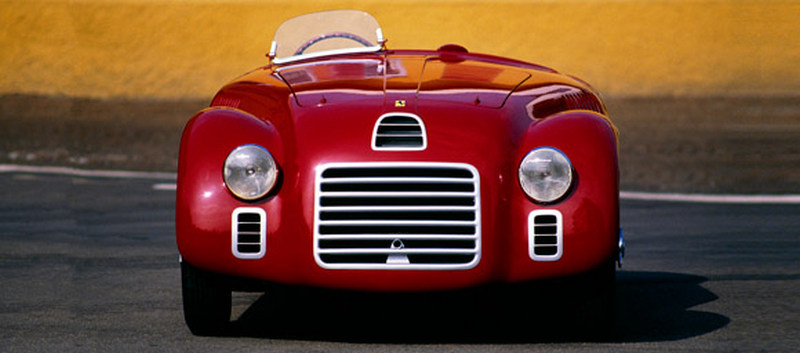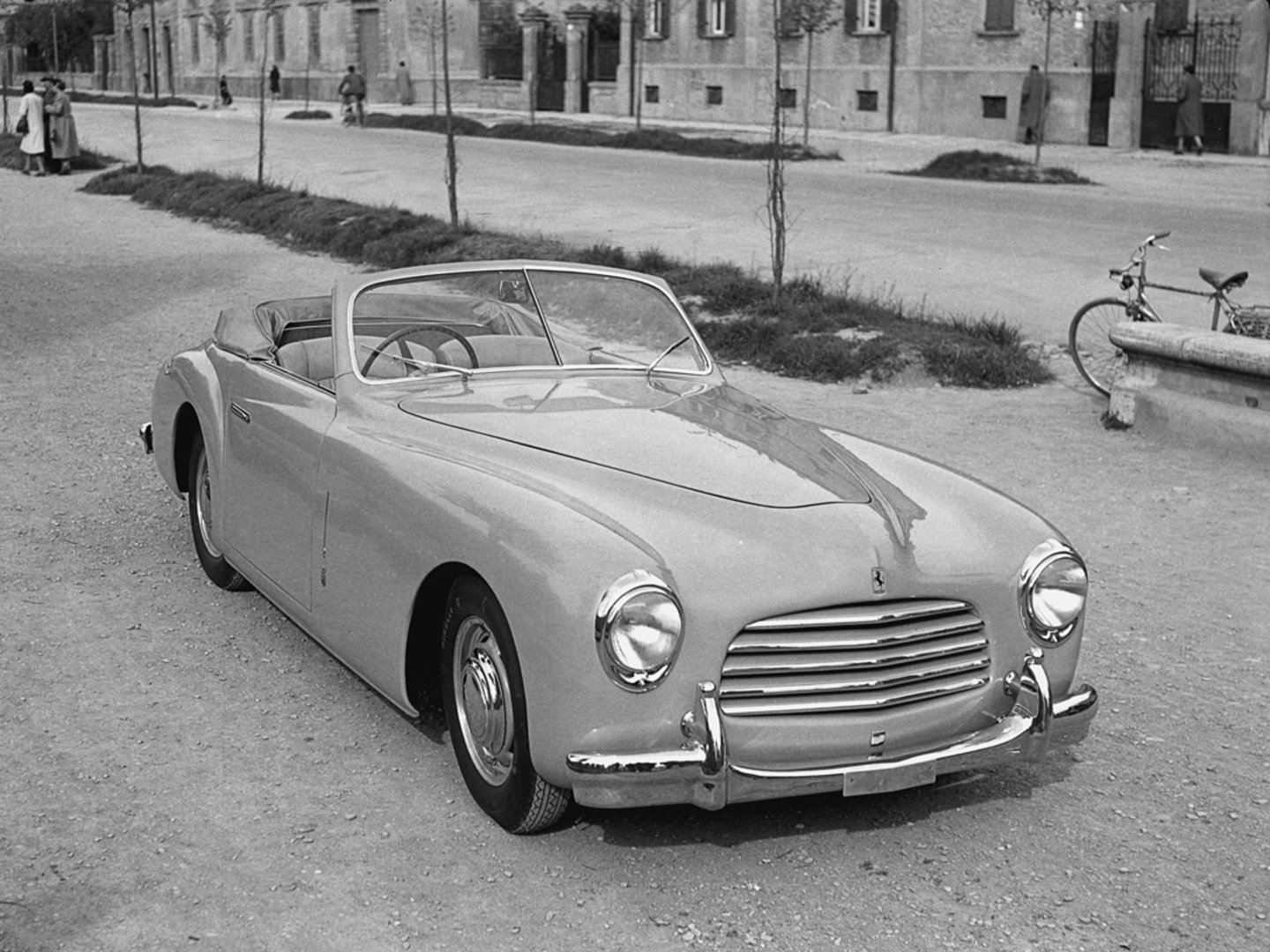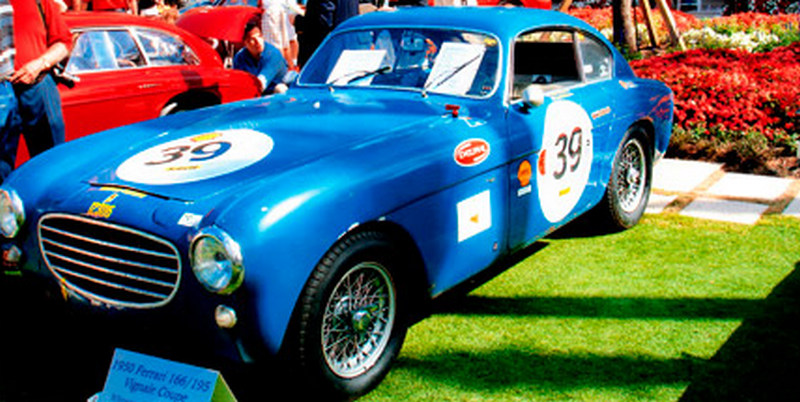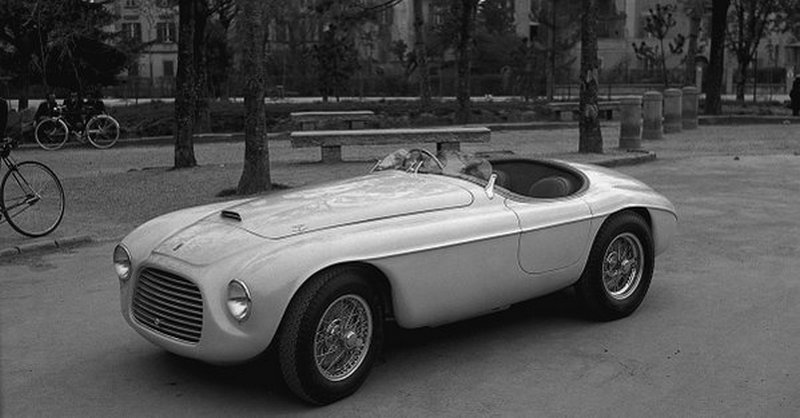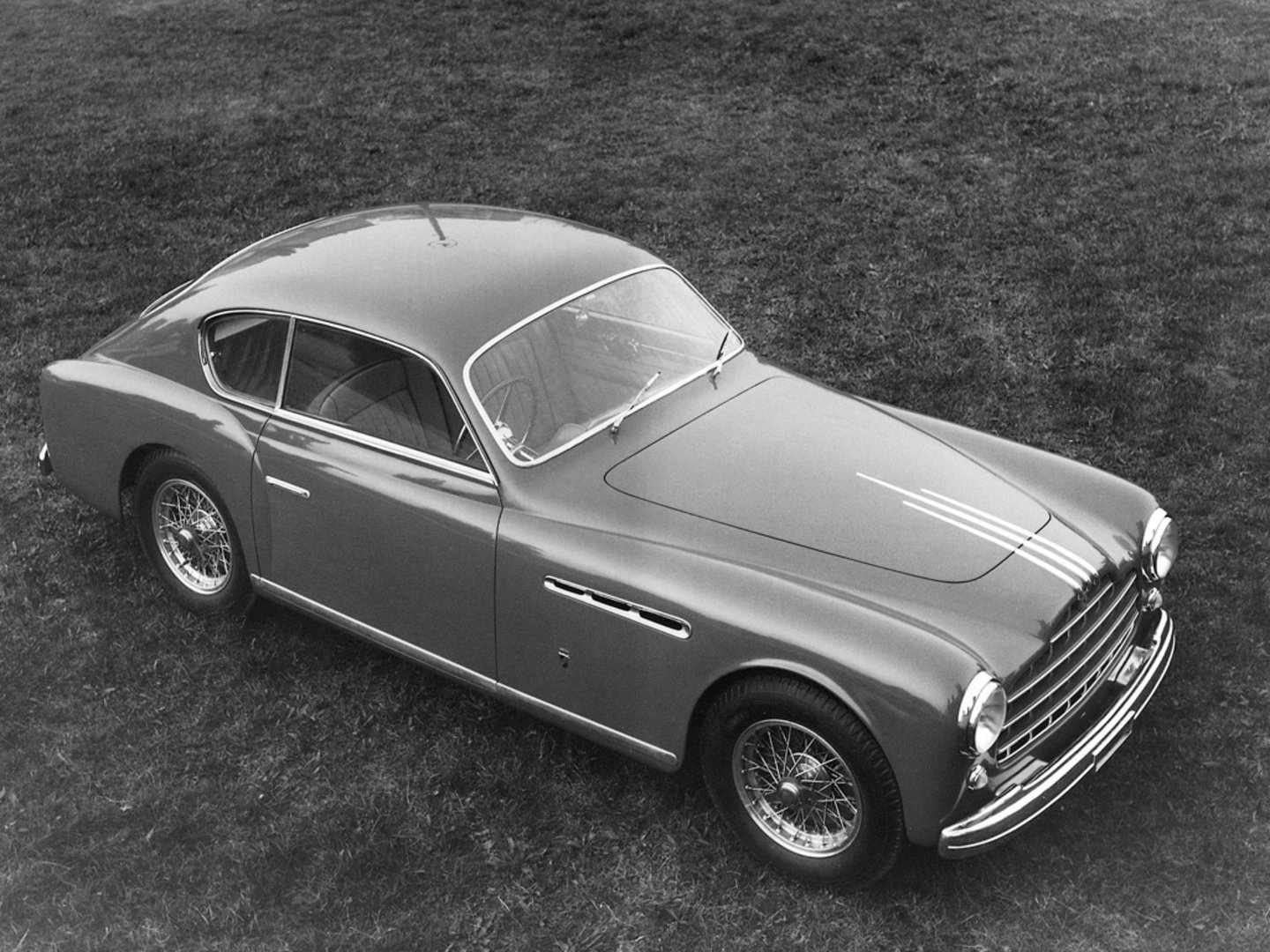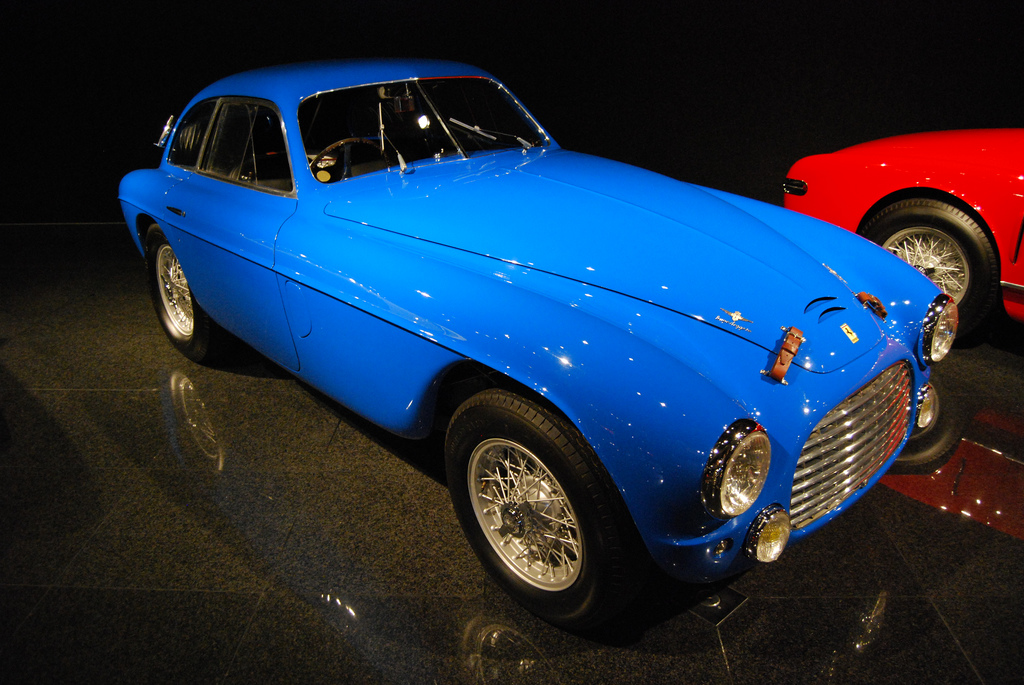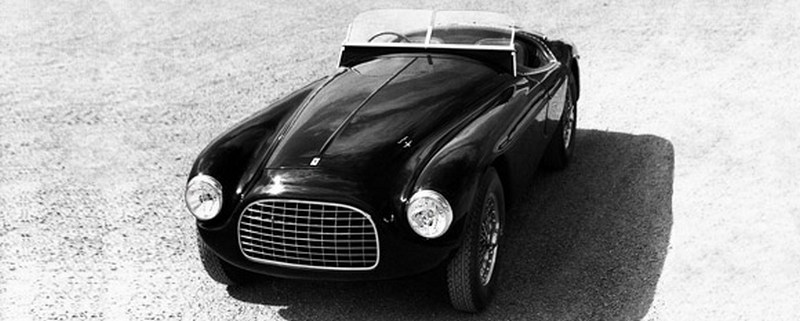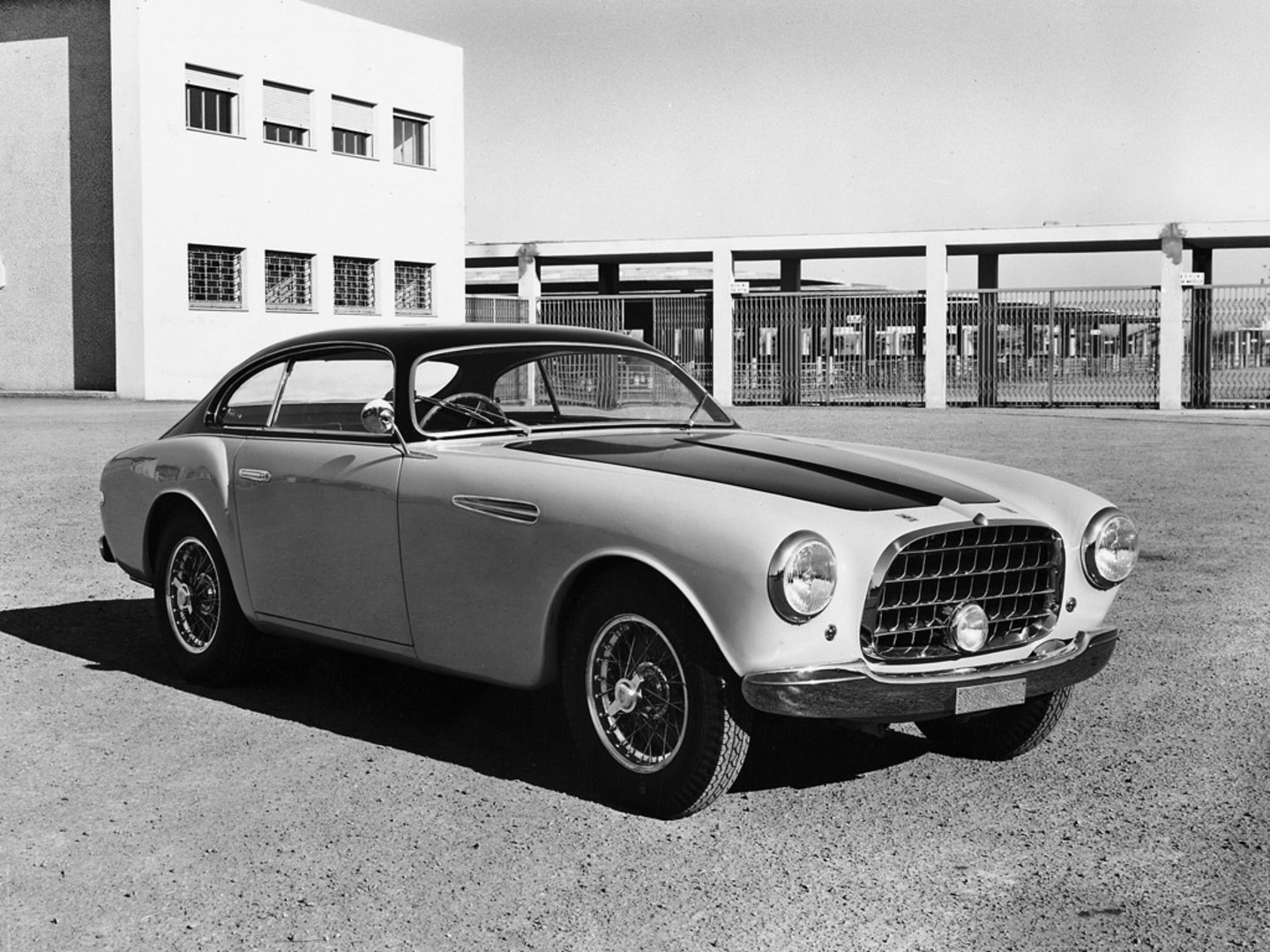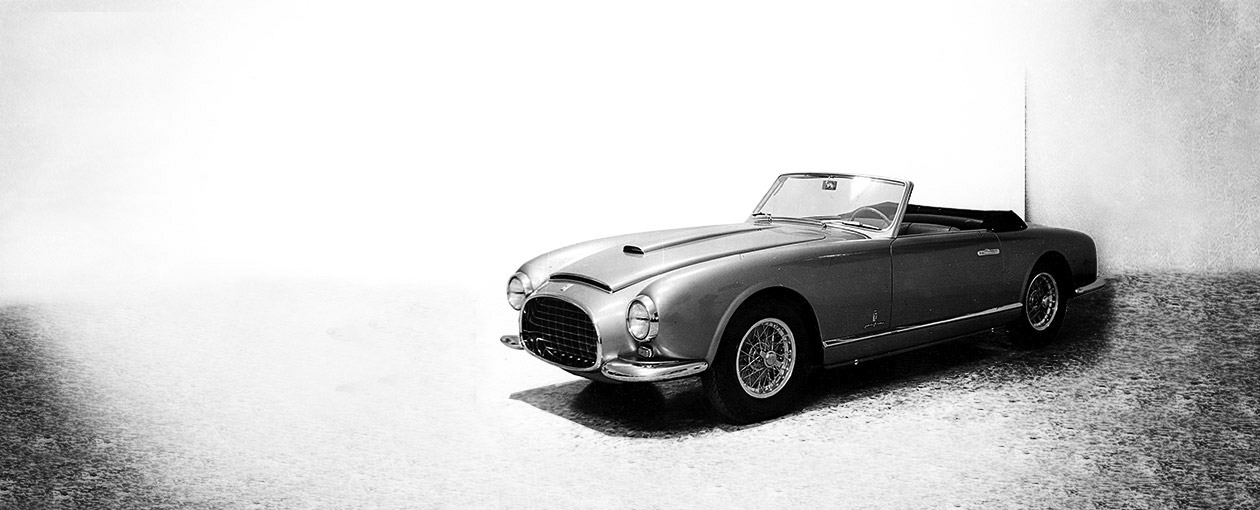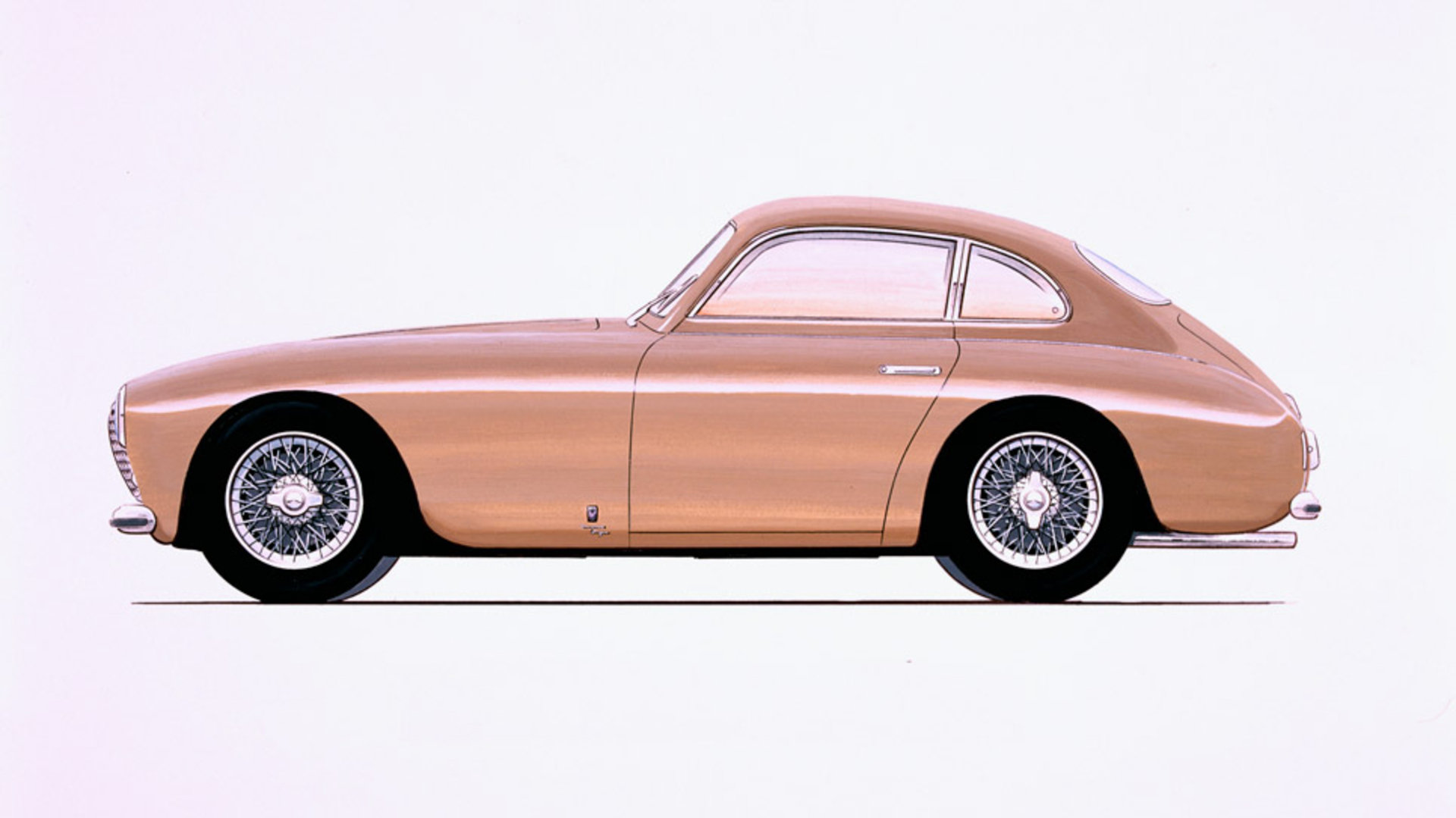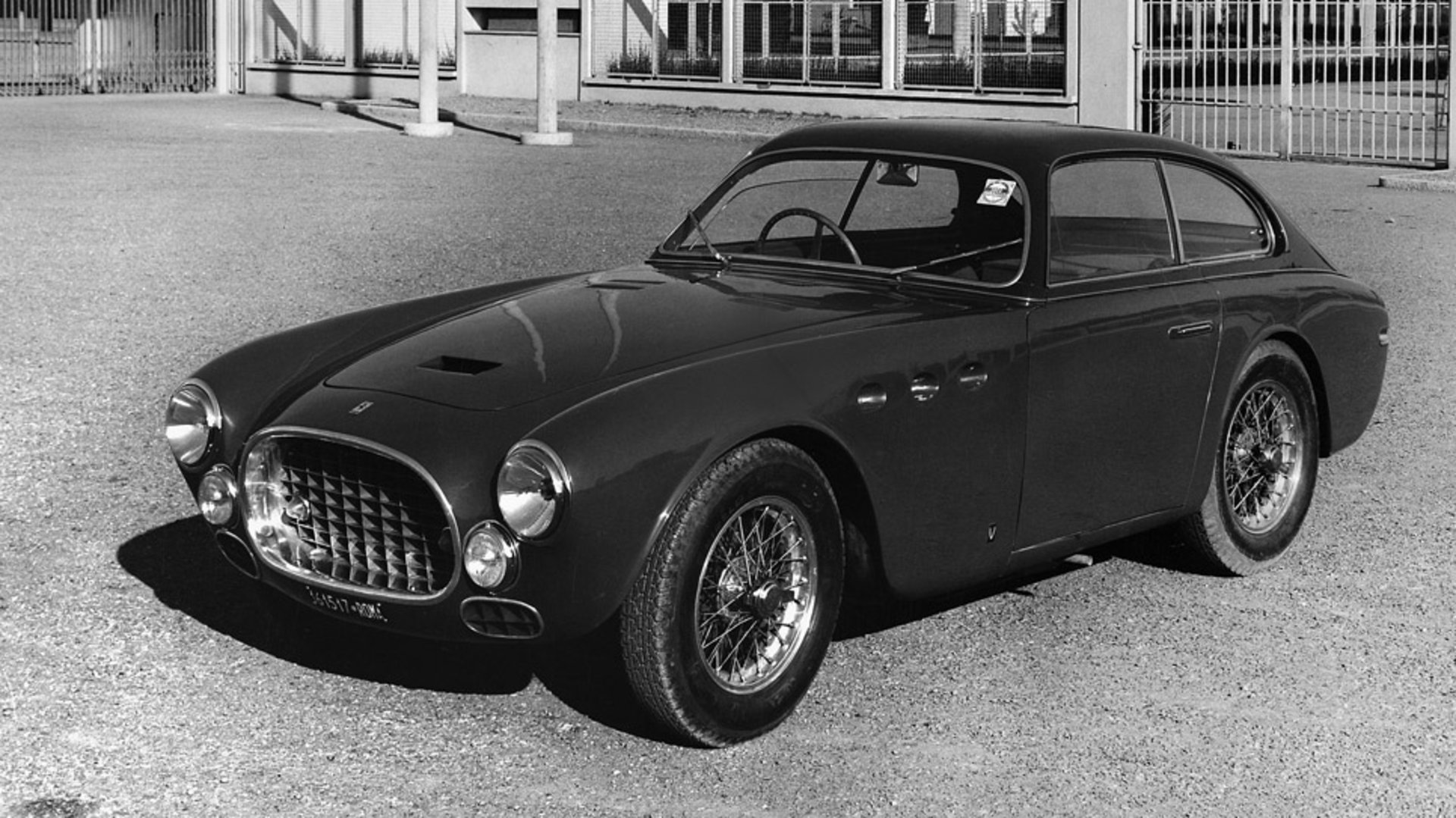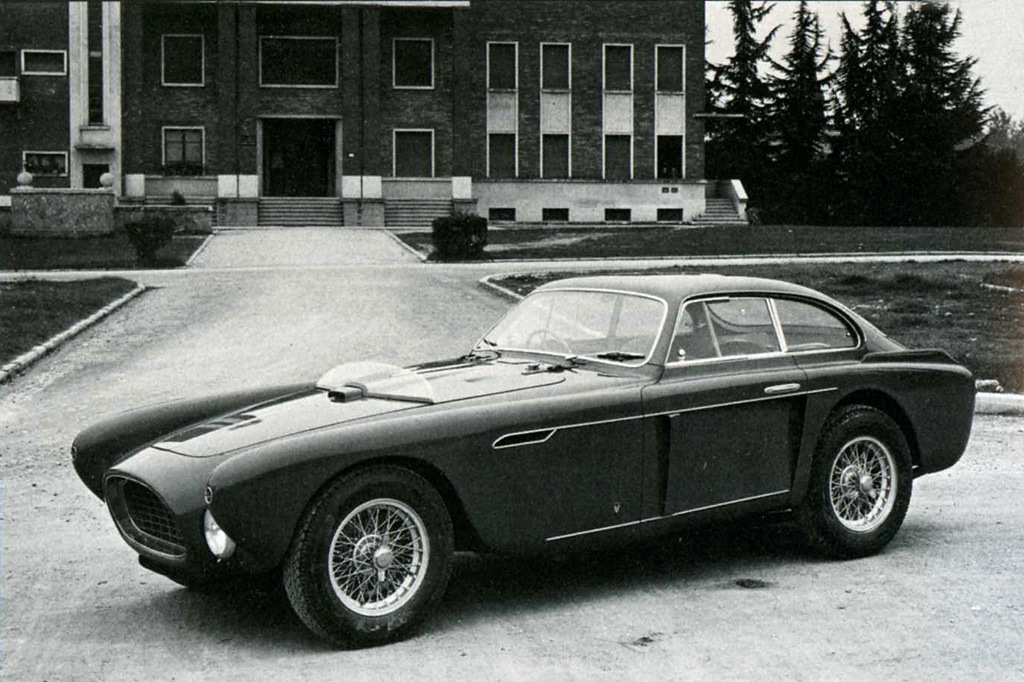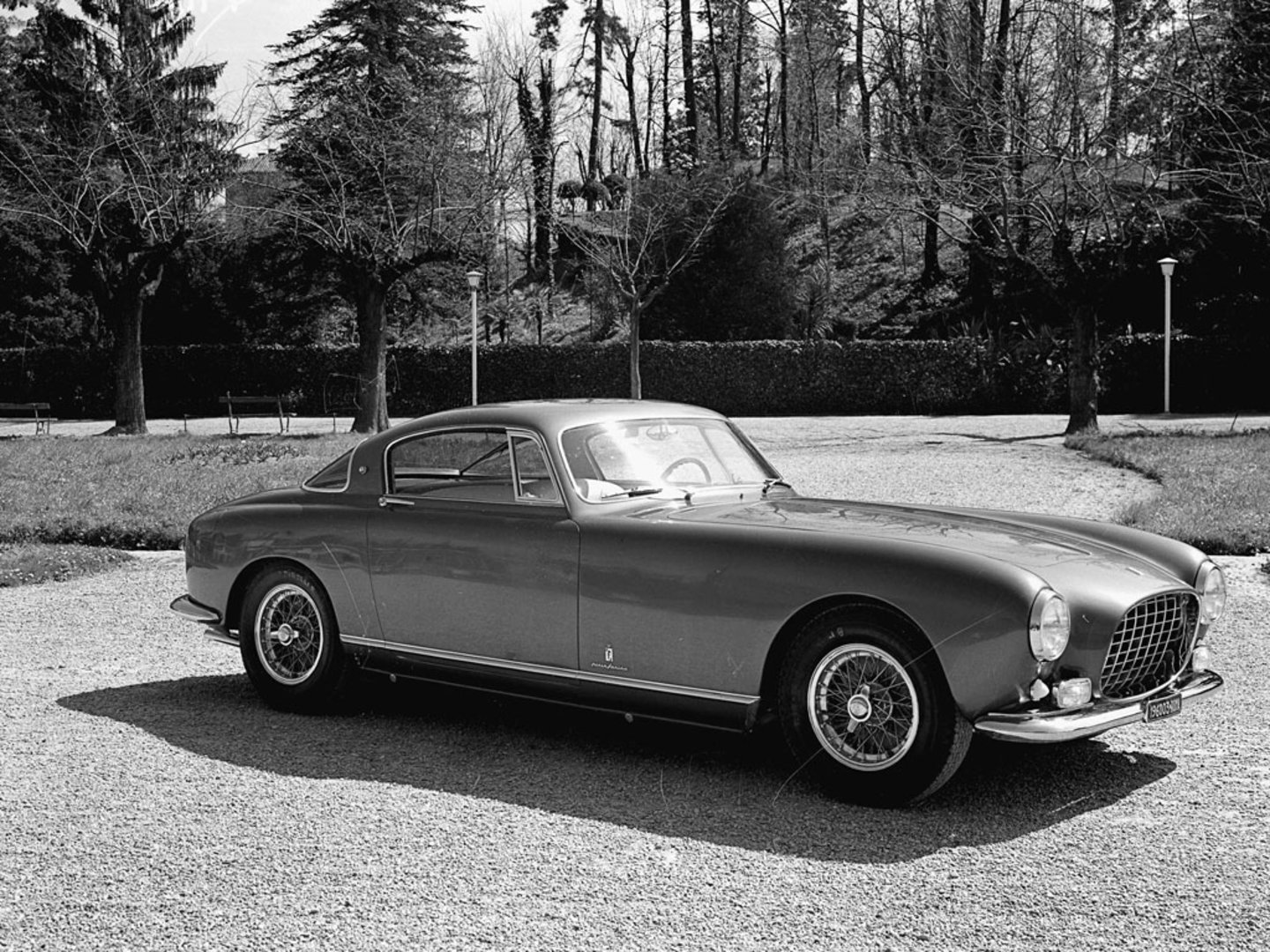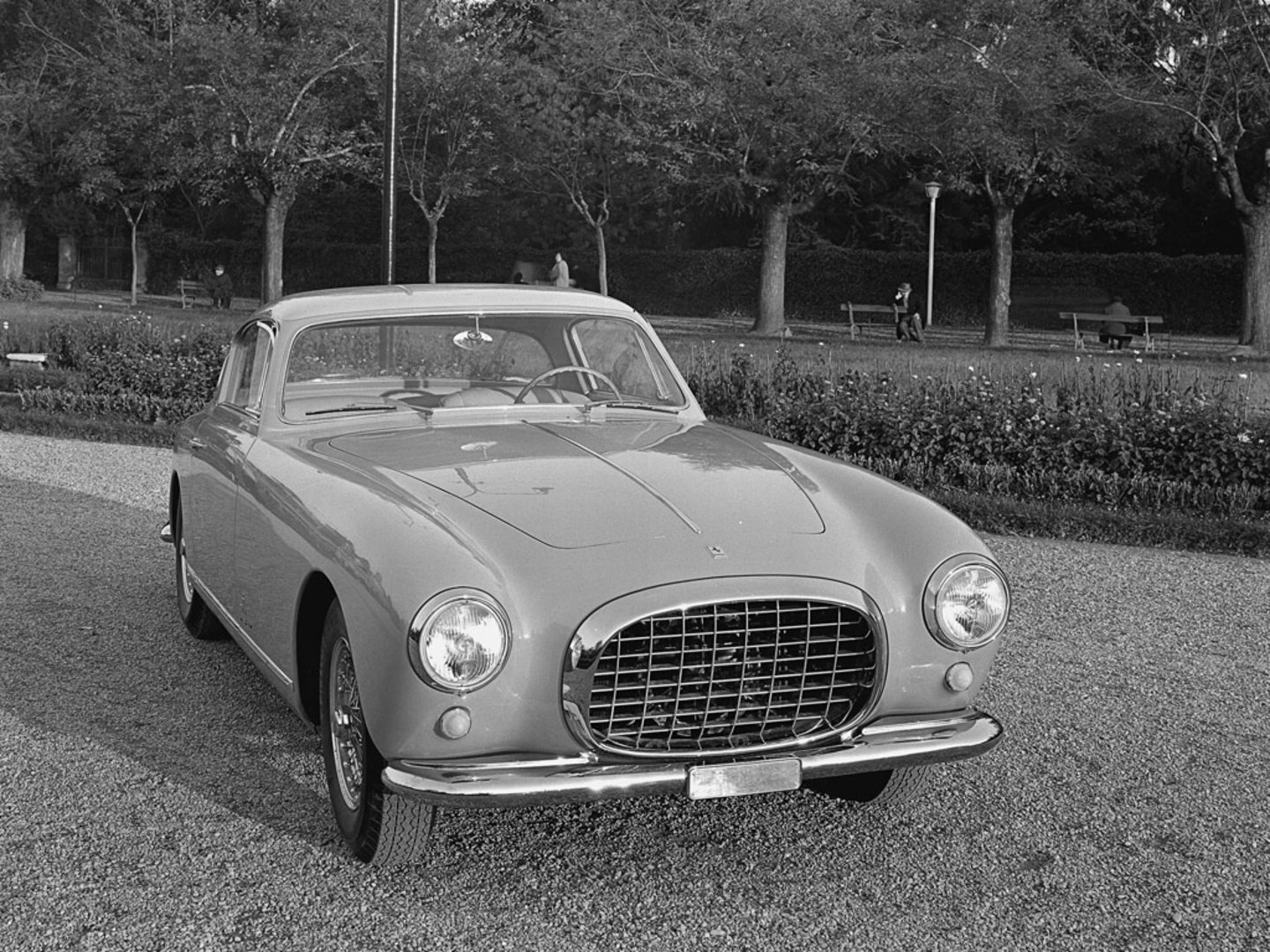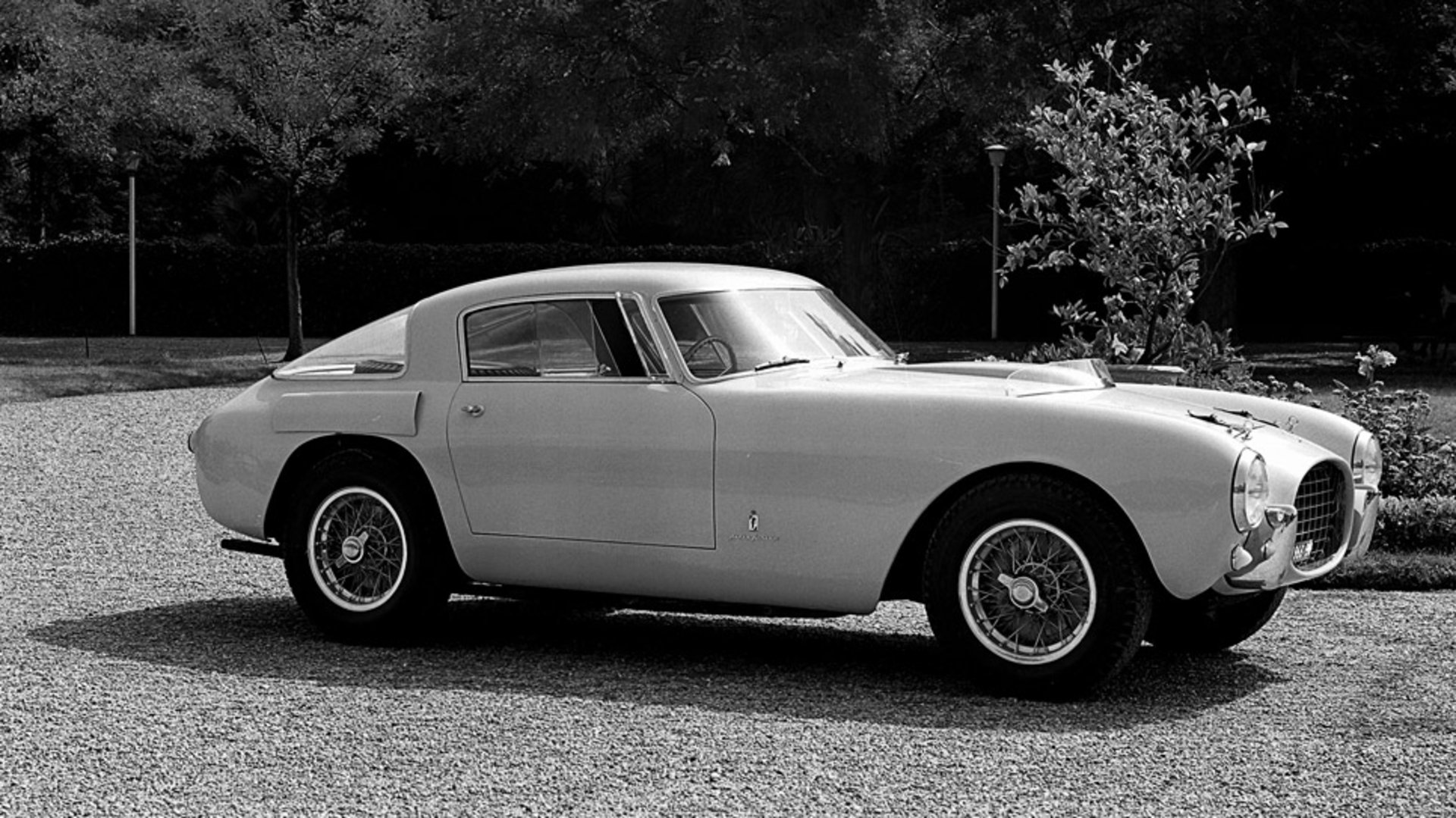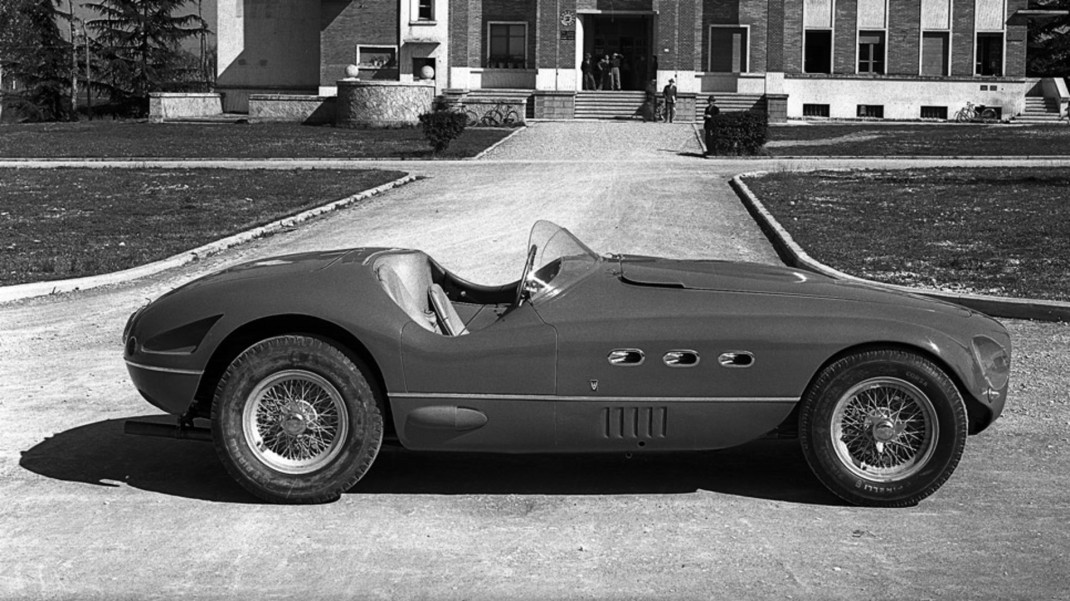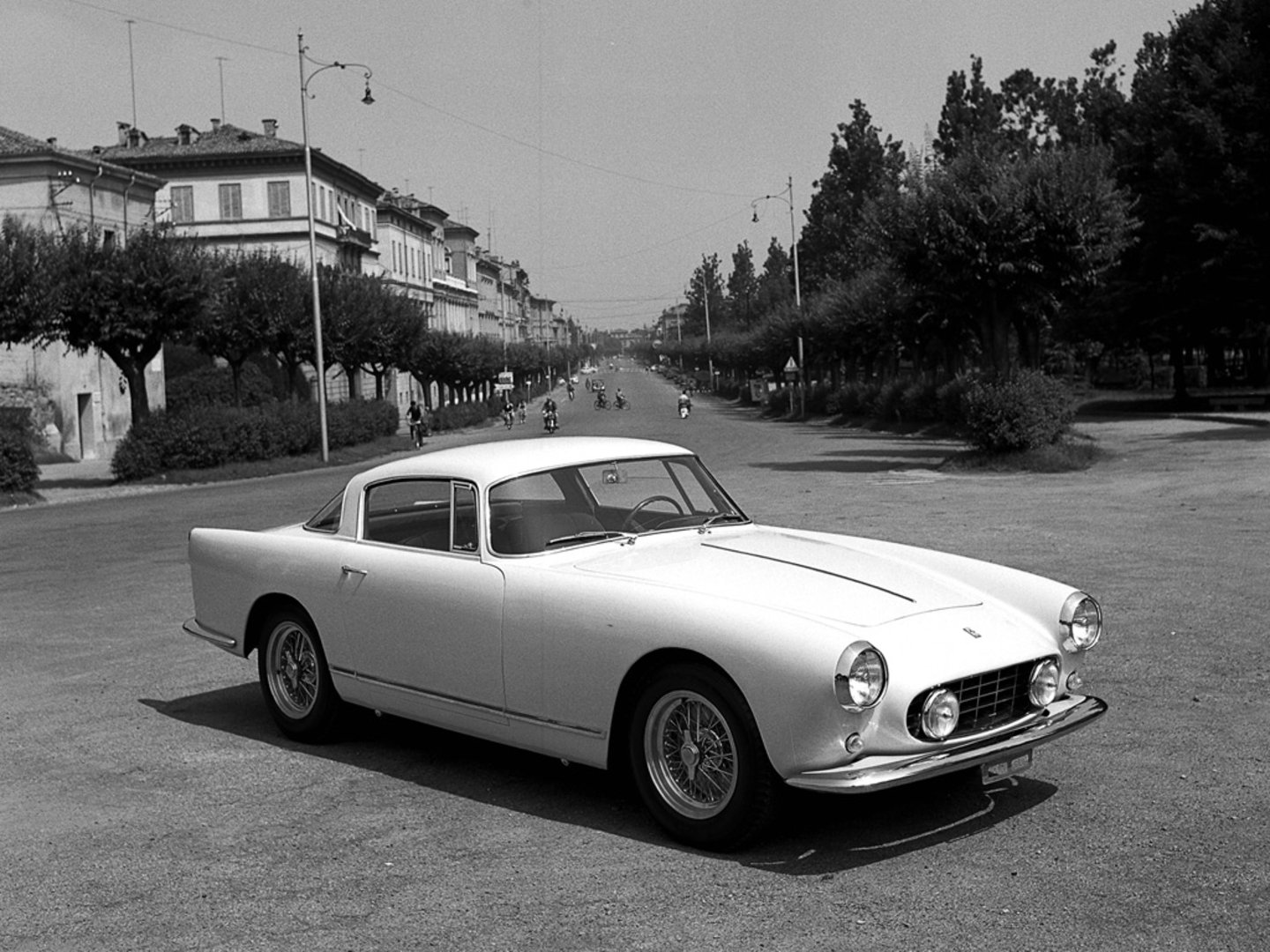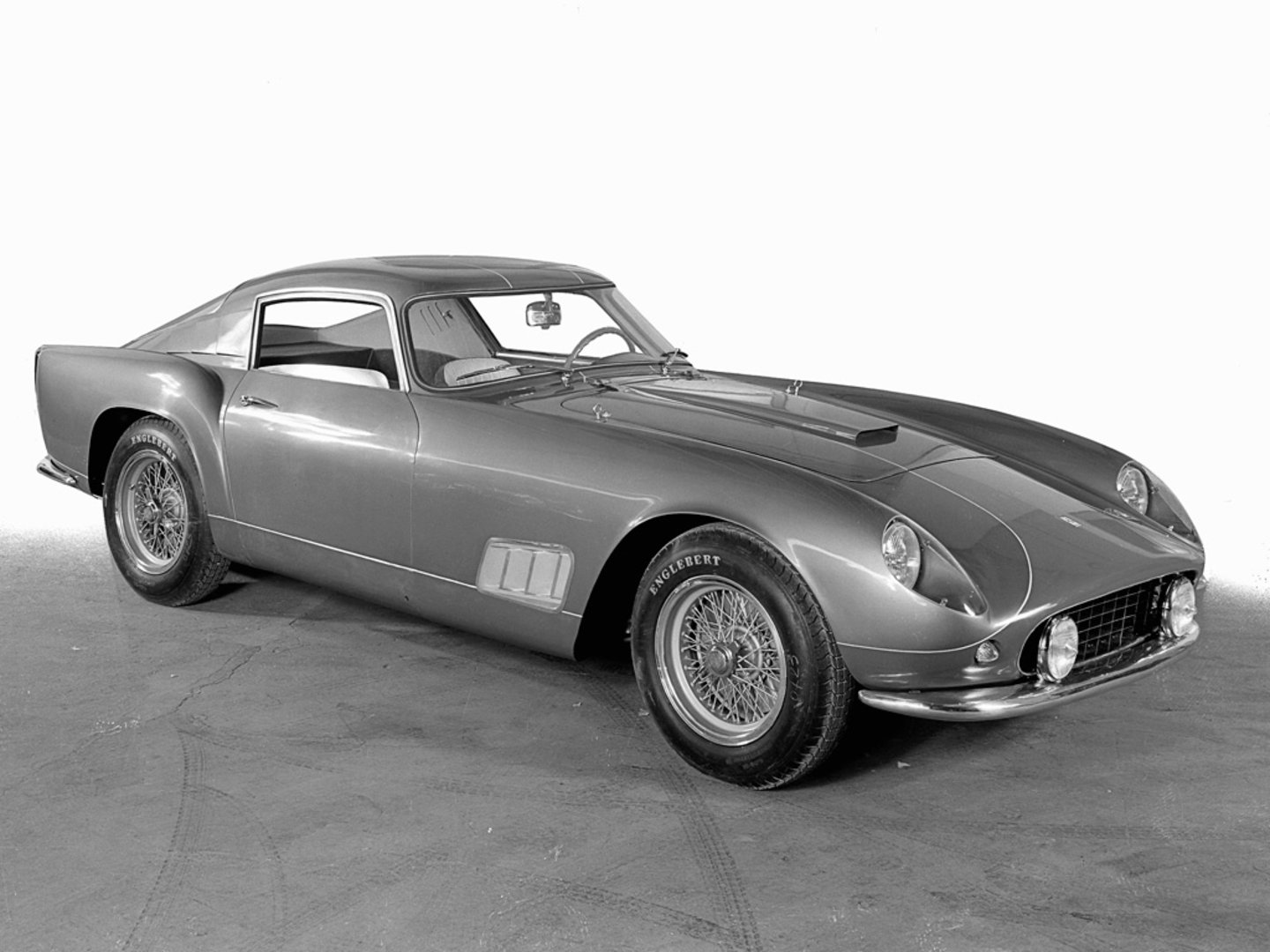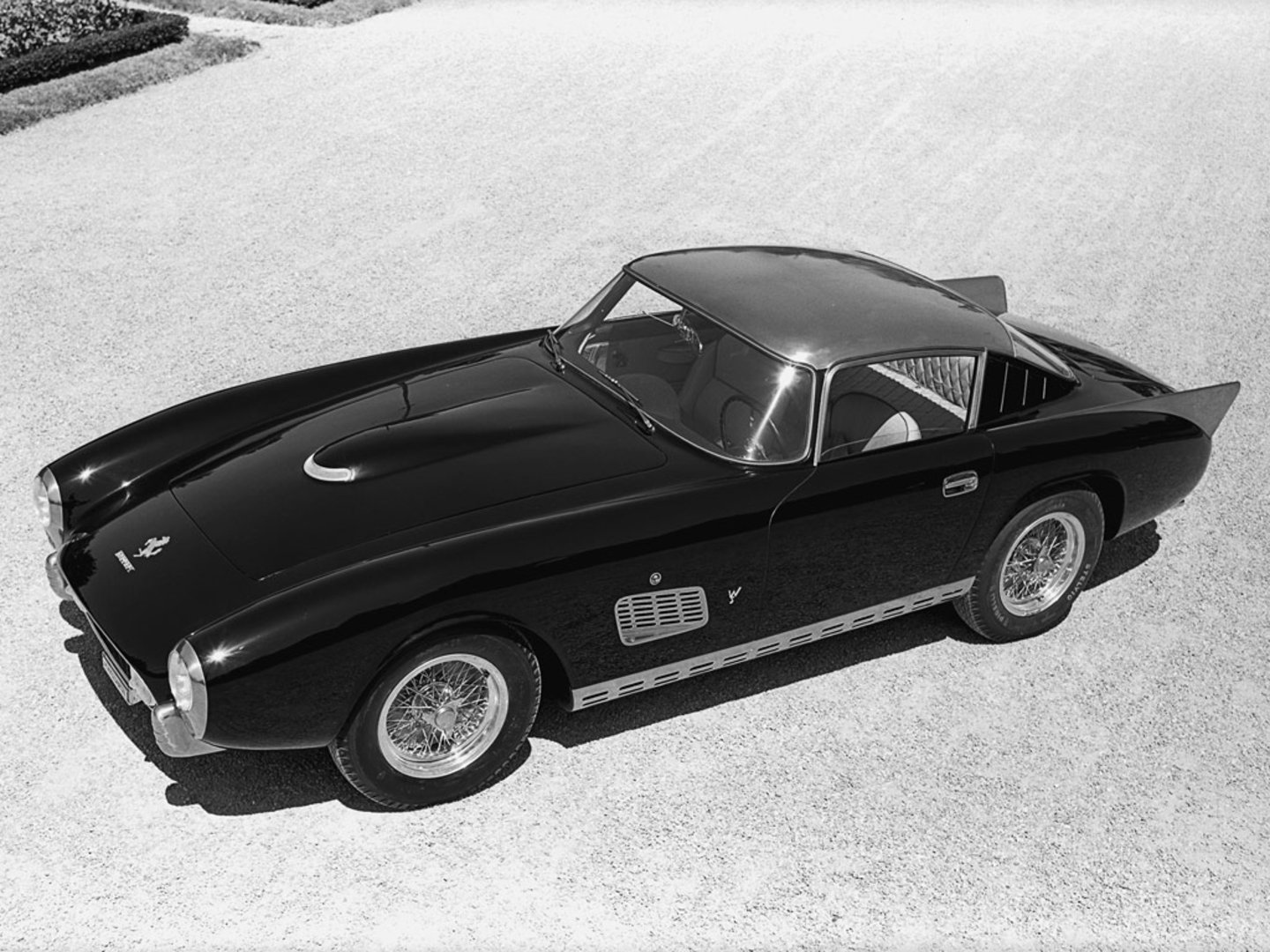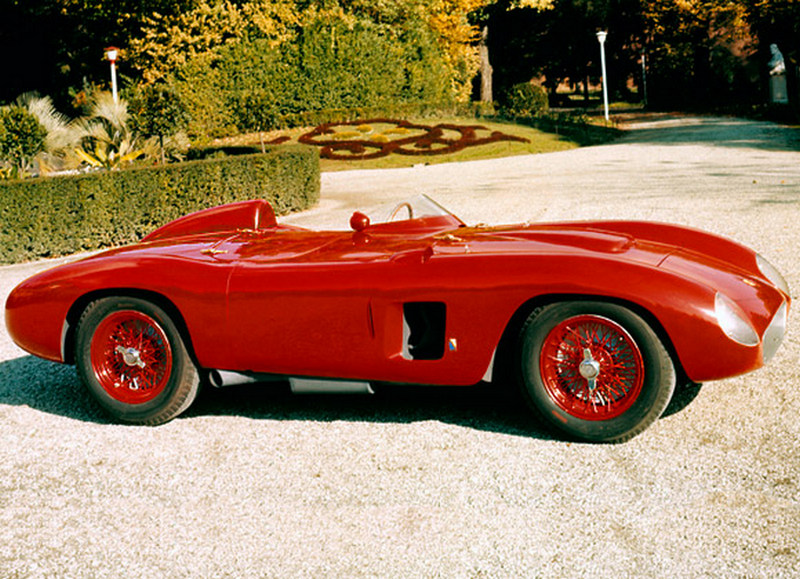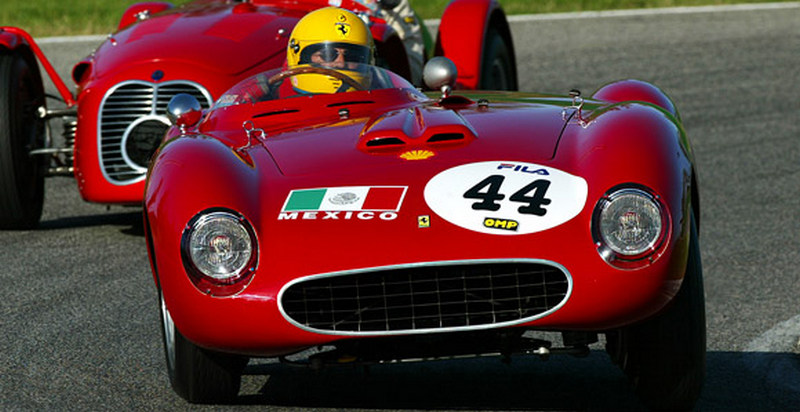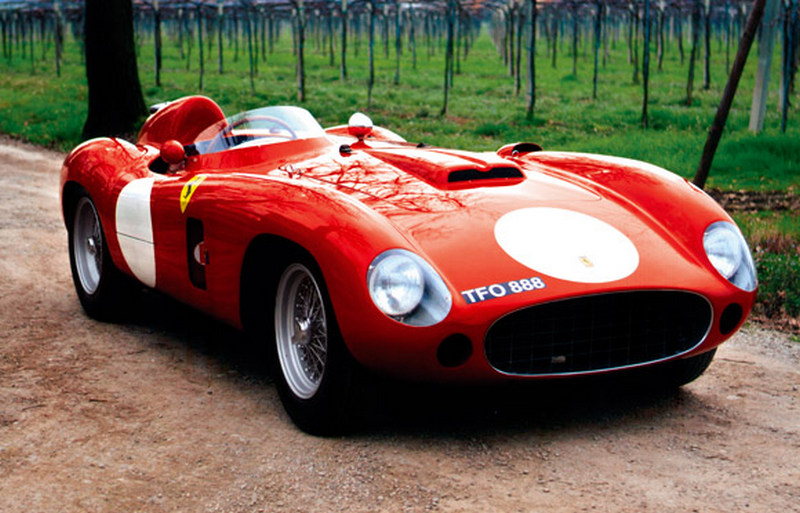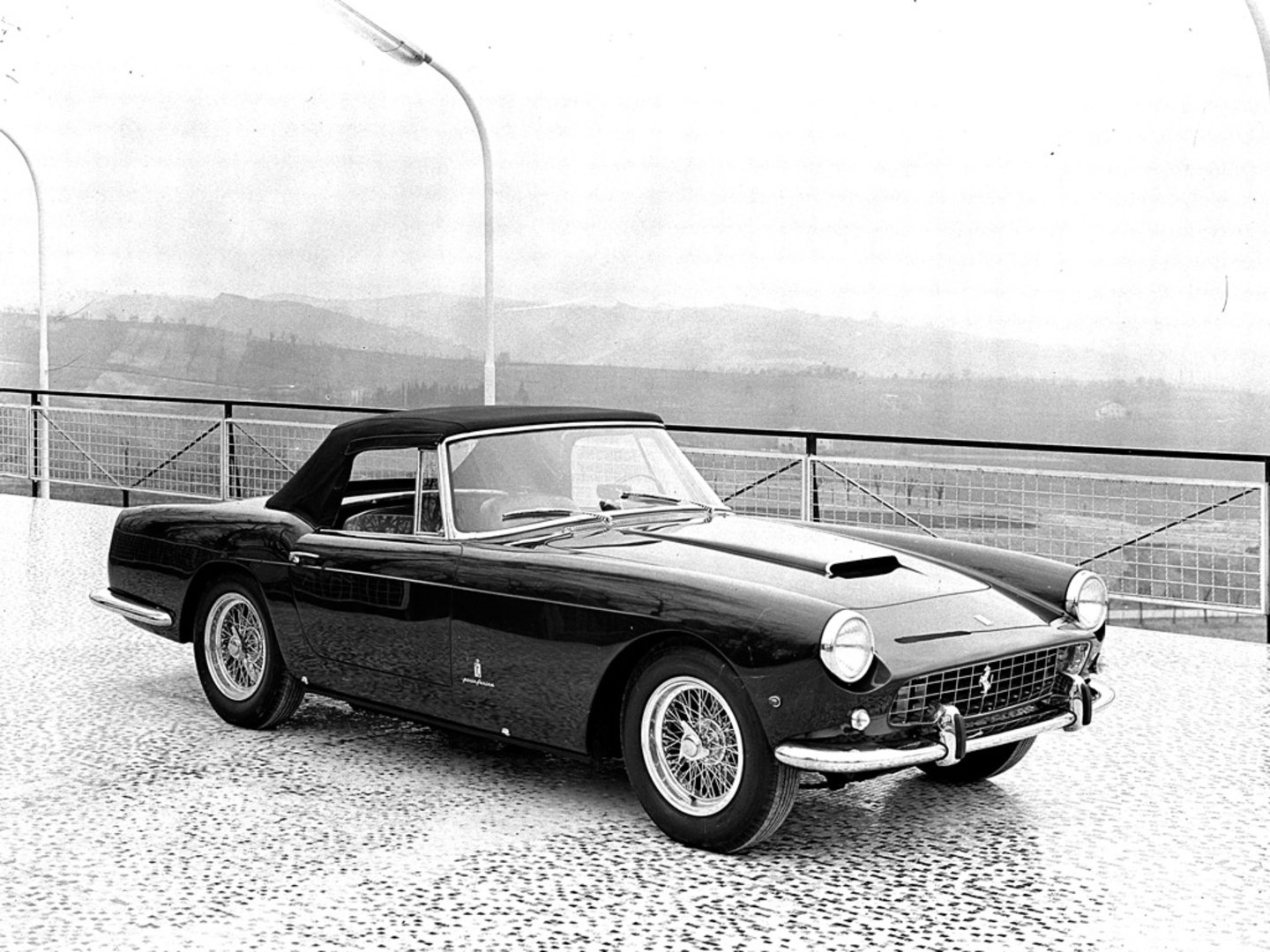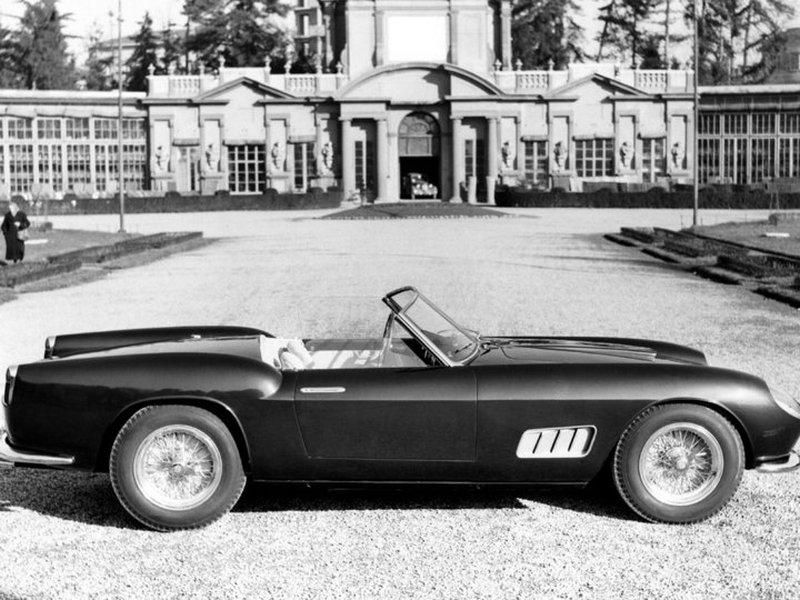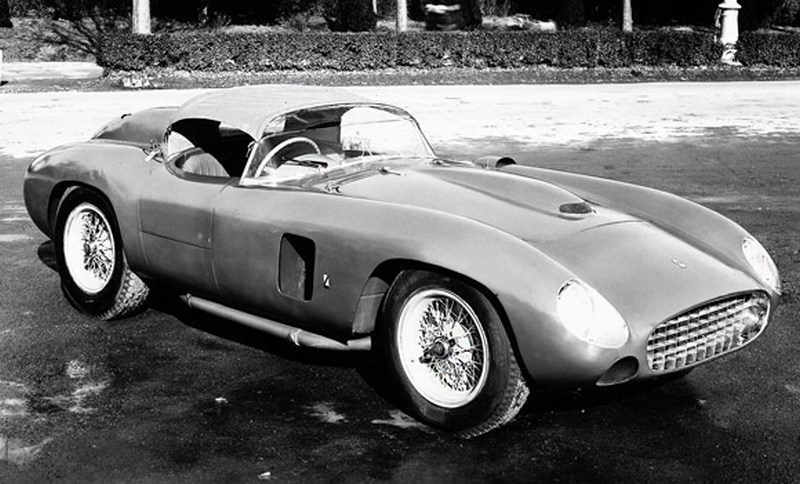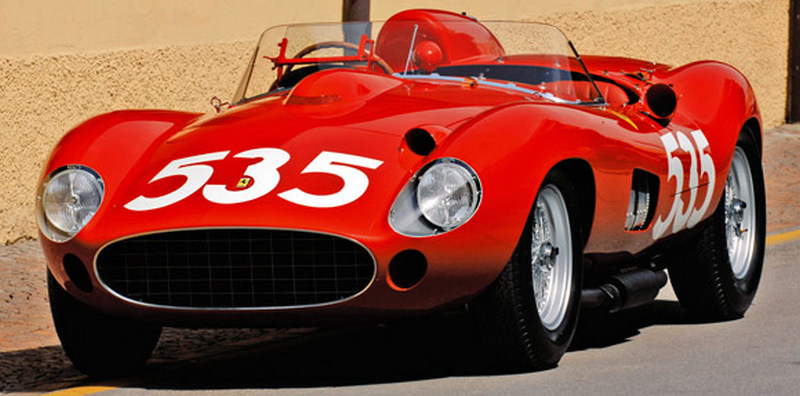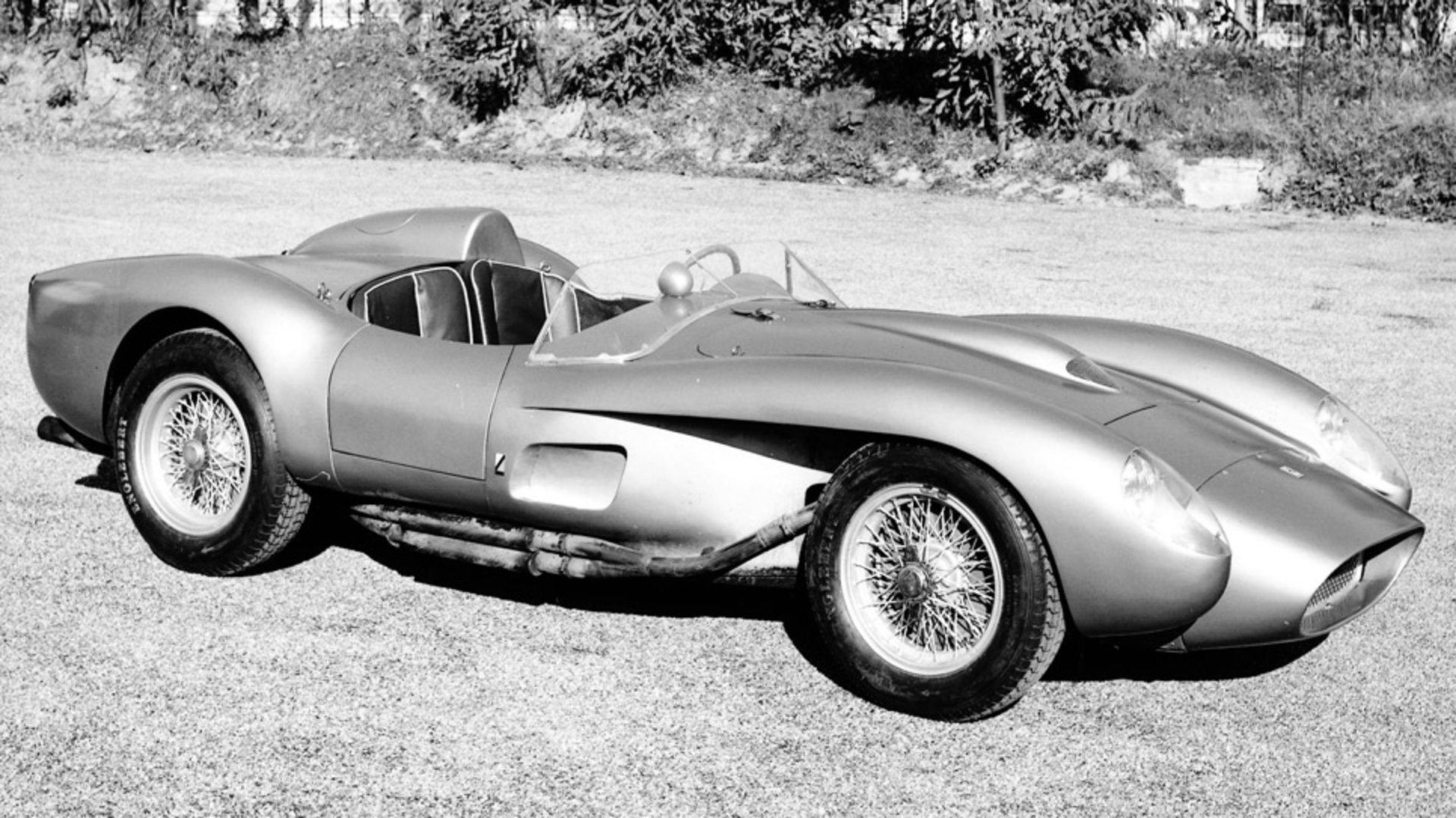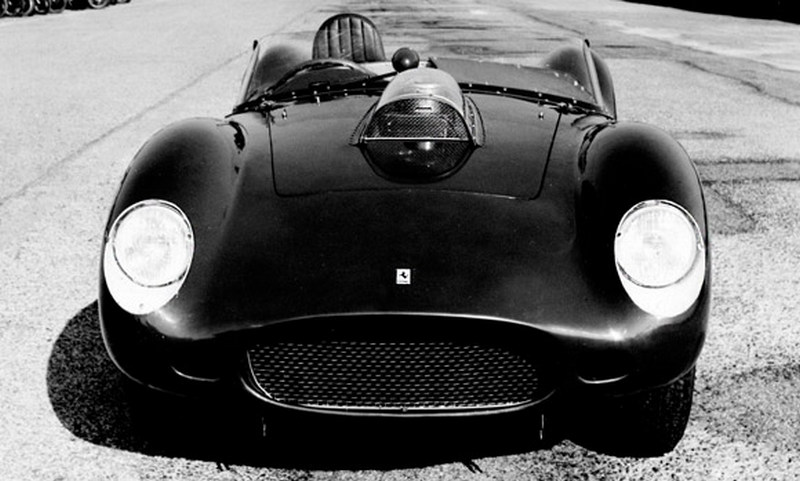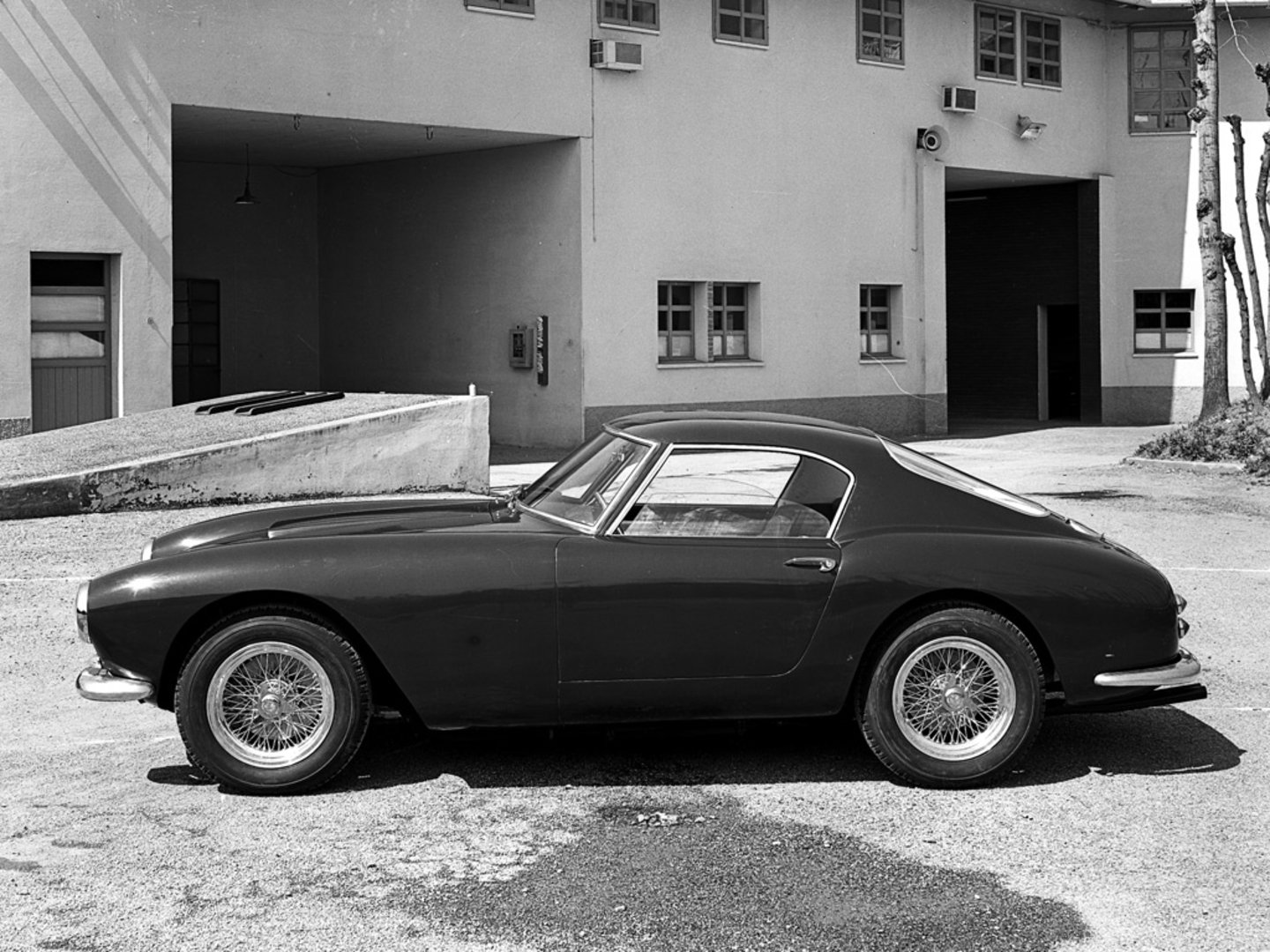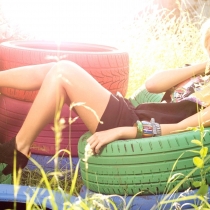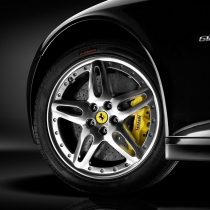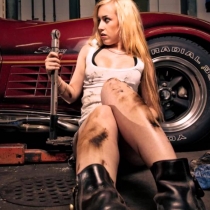Ferrari S.p.A. is an Italian luxury sports car manufacturer based in Maranello. Founded by Enzo Ferrari in 1939 as Auto Avio Costruzioni, the company built its first car in 1940. However, the company’s inception as an auto manufacturer is usually recognized in 1947 when the first Ferrari-badged car was completed.
Throughout its history, the company has been noted for its continued participation in racing, especially in Formula One, where it is the most successful racing team, holding the most constructors championships (16) and having produced the highest number of winning drivers (15). Ferrari road cars are generally seen as a symbol of speed, luxury and wealth.
Today Carrrs.com presents Ferrari cars of 40-50s.
1940s:
Ferrari 125 S (1947)
This was the very first car to wear the Ferrari badge. The V12 engine was designed by Gioachino Colombo with contributions from Giuseppe Busso and Luigi Bazzi. Sport and competition versions of the 125 S were built with different bodywork although the chassis and running gear of the cars remained basically identical.
The 125 S’s debut on the Piacenza circuit was, in the words of Enzo Ferrari himself, “a promising failure.” In fact, Franco Cortese had to pull out because of a problem with the fuel pump while leading the race. However, over the following four months, the 125 S was back on the track 13 times, winning six of its races.
Ferrari 166 Inter (1948)
This was Ferrari’s first 12-cylinder engine to reach 2-litre capacity. As in the case of the 159 S, bore sizes and strokes were both increased, and as usual both open-wheel and full bodywork models were produced.
This model proved successful and was one of the first to do well outside Italy, helping to build a reputation for Ferrari in the all-important American market. The 166 Inter models were the road versions of the 166 sports racing models like the 166 MM barchettas, hence they carried chassis numbers in the odd series range, and were produced between 1948 and 1950. They normally had coupé bodywork, although Stabilimenti Farina produced three examples in cabriolet form and Bertone also produced a single cabriolet body for the model. Various coachbuilders’ bodywork was fitted to the series, all with their own interpretation of how they felt a Ferrari should be coutured.
Ferrari 166 S (1948)
The 166 S was launched at the start of 1948 in both berlinetta and spider versions, both of which were built by Allemano. The berlinetta took victory in that year’s Mille Miglia, while the spider won the Giro di Sicilia.
Ferrari followed this success with a one-off prototype for a production car called the 166 Sport, but the name was quickly changed to 166 Inter, in which guise Allemano, Touring, Bertone, Ghia, Vignale and Stabilimenti Farina all went on to create some memorable interpretations, both open top and otherwise. These cars were custom-built to the owners’ specifications and the most common request was for the three carburettor option.
Ferrari 166 MM (1948)
Designed for long distance competition, the 166 MM took its name from one of the world’s most famous road races, the Mille Miglia, in which the Maranello cars were to triumph again and again. Its coachwork was built by Touring using the “Superlight” method. The 166 MM was both extremely light and extremely dynamic whilst still maintaining significant structural stiffness. The 166 MM’s engine was also modified for run on “normal” commercially available fuel.
1950s:
Ferrari 195 Inter (1950)
This was a touring-type version of the 195 S, with a more powerful yet more flexible engine which made driving easier for clients unused to extreme performance. Touring, Ghia and Ghia Aigle (the first foreign coachworks to take an active interest in a Ferrari) created a number of different versions, some of which proved to be quite successful in GT racing. The most popular versions of this model, however, were those by Vignale, who produced some stunning personalised coupés for the most exclusive clientele.
The 195 models were developed from the 166 Inter series, with a slightly longer wheelbase, up from 2420 mm to 2500 mm, to increase cabin space, otherwise the chassis frame was of the same basic tubular steel construction as that of the earlier model.
Ferrari 195 S (1950)
A further development of the 12-cylinder that reached a displacement of 2,350 cc. The increase in power was combined with a sweeter, more gradual delivery. Just a small number of 195 Ss were produced, with Touring bodying both the open and coupé versions.
Giannino Marzotto drove the coupé version to a memorable win at the 1950 Mille Miglia. Marred by bad weather, that particular race is also be remembered for the fact that Marzotto took part wearing in a double breasted suit and tie.
Ferrari 340 America (1950)
The American market was growing with every year that passed and showed great potential for the Maranello marque. In fact, this model, which was actually based directly on the 340 F1, was created specifically to meet the demands of the new breed of owner.
The V12 had designed by Aurelio Lampredi. The first model, designed by Touring, had lines reminiscent of those of the 166 Barchetta. Interesting versions were also produced by Ghia and Vignale, however, and it was with a Vignale Berlinetta, that Gigi Villoresi won the 1951 Mille Miglia.
Ferrari 212 Inter (1951)
The Gioachino Colombo V12 was bored out to provide a bigger displacement. The chassis was inspired by that of the 166 MM, with modifications aimed at transmitting the higher power output to the road. The later versions saw the introduction of a tubular chassis known as the ‘Tuboscocca’, which increased structural rigidity.
Apart from Touring and Vignale (stylistically, the most successful at interpreting this chassis), both the Turin-based Rocco Motto coachworks and Fontana from Padua tried their hand at bodying this model.
Ferrari 342 America (1951)
Interest in Ferraris was growing among potential clients, but some were wary of the competition levels of performance provided by engines which reached the market with very little in the way of detuning. To meet the needs of this type of Client, Ferrari introduced the 342 America, a more accommodating four-seater featuring a more flexible engine, a new synchronised 4-speed gearbox and more user-friendly handling.
The first version by Ghia was received without much enthusiasm, but subsequent interpretations by Vignale and Pininfarina paved the way for the model’s success. It would be improper to talk of the 342 America without reference to the 340 America model that went into production in 1951, and had a relatively small production run of a little over twenty cars.
Ferrari 212 Export (1951)
Gioachino Colombo’s V12 was given a further boost in power to 2562.51 cm3. A new chassis was constructed; one with a more rigid undercarriage, to be able to withstand the 150 bhp the engine was capable of delivering. In the 212 Vittorio Marzotto won the Targa Florio and the Taruffi-Chinetti team came first in the Carrera Panamerica.
Ferrari 225 S (1952)
Ferrari continued with its development of two absolute jewels at this particular time: the two V12s designed respectively by Gioachino Colombo and Aurelio Lampredi. Columbo’s touch was still very much in evidence in the 225 S’s engine, although the improvements made to it were entirely the result of Lampredi’s research, particularly the strikingly innovative and efficient design of the intake manifold and the distribution. A number of examples were built using Gilco’s “Tuboscocca” (tubular semi-monocoque) chassis design, while the bodywork bore witness to the artistry of Touring and Vignale, both at the height of their creativity at that time.
Ferrari 340 Mexico (1952)
Resounding success in the 1951 Carrera Panamericana convinced Enzo Ferrari to create this car. Only four examples were built in all by Vignale: three Berlinettas and one Spider.
To meet the incredible competition head on, a more geared-up fifth gear was added as were new cylinder heads with quadruple carburettors that would further boost the engine’s already impressive power. The rear axle and transmission were also further strengthened. Chinetti and Lucas went on to finish the race in third position.
Ferrari 250 Europa (1953)
The 250 Europa took over from the 212 Inter, and for economies of scale, shared the same chassis as the 375 America. The Lampredi V12 was kept below 3 litres.
The first cars produced were bodied by Vignale along the lines of the 340 Mexico. Subsequently, production was continued by Pininfarina, who also built a two-seater cabriolet version. There were clear styling overtones with the bigger 375 America, though the latter had an engine that was perhaps more suited to the size of the car.
Ferrari 375 America (1953)
Heir to the 342 America, this model was aimed at the same segment of the market. The Colombo-designed V12 was dropped in favour of the Aurelio Lampredi version that featured cylinder heads with twin inlet tracts.
The superb mechanics and elegant Pininfarina lines made it an extremely desirable car, even if extremely expensive. On performance terms alone it was unbeatable, although admittedly Ferrari had few rivals at that level. Of the dozen produced, one which really stands out is the two-seater cabriolet created by Pininfarina for King Leopold of Belgium.
Ferrari 250 MM (1953)
Two versions of the 250 Sport-derived 250 MM were built: a Pininfarina berlinetta, which hailed in a whole new era in design, and a barchetta by Vignale. Significant improvements had been made to both the engine and the suspensions with the addition of Houdaille shocks. Although the gearbox was designed with only four synchronised gears, the car was much easier to handle (the gears were much easier to change?). In addition to victories on its home turf, the 250 MM also scored some early successes in the States with Phil Hill at the wheel.
Ferrari 340 MM (1953)
The 340 MM was built for the 1953 Mille Miglia which Giannino Marzotto duly won in a barchetta version with coachwork by Vignale. Marzotto set a new record speed for the race at an average of over 142 km/h. However, the car was quite a handful to drive, thanks in part to its incredible power which very few drivers ever managed to fully exploit. However, Gigi Villoresi was one of the greats who did, roaring to victory in the Giro di Sicilia in the same year. Formula 1 champion Alberto Ascari also contributed to the development of the 340 MM.
Ferrari 250 GT Coupé (1953)
Presented at the Paris Motor Show in 1954, the 250 GT Coupé represented Ferrari’s first attempt at standardising a model destined for the normal motorist. Developed from the 250 Europa, it was fitted with a version of the Colombo Type 125 engine fed by three classic Weber 36 DCZ carburettors.
After building the first few, Pininfarina was unable to keep up with the demand, and while their new factory at Grugliasco was being built, production was taken over by Boano. Around eighty were produced in just over a year. The 250 GT Coupé, was the immediate successor to the 250 Europa model, and was presented to the public at the 1954 Paris Salon, initially also being called the 250 Europa. However, the GT suffix to the model title was soon added, to help differentiate it from its predecessor, and then it became known simply as the 250 GT.
Ferrari 250 GT Berlinetta (1956)
This was the first model in the legendary berlinetta series. These cars were not only perfect for driving to the track, but also for racing (and winning!) on it.
The first version was bodied by Scaglietti (as were subsequent versions) and immediately showed its mettle during the very tough Tour de France. As a result it was often unofficially referred to as the TdF. After a new series was built with a 20 cm shorter wheel base, the longer first generation models were quickly nicknamed LWB, or long wheelbase.
Ferrari 410 Superamerica (1956)
The engine that was to equip the 410 Superamerica was presented on the chassis of the 375 America at the Paris Motor Show in October 1955. The car itself was unveiled to the public later, at the 1956 Brussels Motor Show. The elegant bodywork with its impressive dimensions was the work of Pinin Farina. It is a curious fact that this model, which was destined for series production, actually gave rise to a number of competition versions, reverting to Ferrari’s customary practice.
The 410 Superamerica was the successor to the 375 America model, and was presented to the public as a rolling chassis at the 1955 Paris Salon, then as a complete car at the Brussels Salon early in 1956.
There were three very limited series of the model produced between 1956 and 1959, Those known as the Series I cars were generally built on a 2800mm wheelbase chassis, although there were exceptions, with the Series II cars built on a 2600mm wheelbase chassis, during 1956 and 1957. Late in 1958 the Series III model was presented at the Paris Salon, this series also being on a 2600mm wheelbase, with a new derivation of the body style by Pinin Farina.
Visually the shape of the car shown at the Brussels Salon in 1956 was very similar to the new design for the 250 GT coupe by Pinin Farina, which would evolve into the 250 GT Boano and Ellena series. This body style clothed the majority of the Series I and II cars produced, but there were a few examples that sported radically different one-off coachwork. As the 410 Superamerica models were very expensive and exclusive automobiles for very wealthy clients, there were detail differences even on the “standard” coupes to suit a client’s specific wishes.
Ferrari 500 TR (1956)
Ferrari needed a very new special weapon with which to take on the Maserati four-cylinder two-litre. With this in mind, the 2200cc derived from the Mondial was handed over to a former Maserati engineer named Massimino who made it more reliable and powerful. The heads of the new engine were painted and it is from this feature that the Testarossa took it name. Its coachwork was by Scaglietti, as was that of the more shapely second version, the 500 TRC, which was reserved for existing customers. Although it never raced as an official Team Ferrari car, the 500 TRC still delivered a host of victories thanks to its excellent handling and reliability.
Ferrari 625 LM (1956)
Due to the tragic accident at Le Mans in 1955, the French placed a 2500 cc limit on prototypes for the following year’s race. This meant that the 625LM had to be put together in great haste by boring out the four cylinders of the 2-litre Testarossa engine and replacing the existing carburettors with twin Weber 42 DCOA/3s. Although the 625 LM finished Le Mans in third place courtesy of the Gendebien/Trintignant duo, Ferrari never raced it officially again.
Ferrari 860 Monza (1956)
A development of the 750 Monza, the 860 Monza used a bigger displacement, 3,431 cc version of the four-cylinder engine in the run up to the arrival of the new V12s. After a rather low key debut at the Tourist Trophy, it was sent to the US where Phil Hill drove it to victory at Nassau. An improved version, driven by Collins and Musso, also went on to take second and third in the Mille Miglia behind the new 290 MM. The 860 Monza brought the era of the four-cylinder engine to a close and marked the channelling of the company’s engineering efforts back into the V12.
Ferrari 250 GT Cabriolet (1957)
Pininfarina presented this two-seater spider at the Geneva Motor Show in 1957, a year after a similar proposal by Boano debuted at the same venue. With its classic lines, the Pininfarina interpretation proved to be an instant hit with the more refined clientele.
After the first 40 cars had been produced, a second series was created. To differentiate it from the more sporting 250 GT Spider California, the Cabriolet’s styling was made more sober, boot space was increased and it was made more comfortable inside. Production continued until 1962, and around 200 cars were built in all.
Ferrari 250 California (1957)
Thanks to Ferrari’s reputation in motor sports, and the work of importer Luigi Chinetti, the United States became an important market. John Von Neumann, the west coast representative, thought that there was potential for an open Spider suited to the Californian sun, a sort of open 250 GT Berlinetta.
Chinetti welcomed the proposal and convinced Enzo Ferrari that it was a good idea. Scaglietti was therefore given the opportunity to create this now almost legendary car, building 106 of them, nine with aluminium bodies.
The term ‘spider’ in the model name is something of an anomaly, as the California is really a cabriolet or convertible, with a full folding hood. However, it was in effect an open-top version of the 250 GT Berlinetta alongside which it was produced. Thus, the term spider differentiated it from the concurrently produced 250 GT cabriolets, which were allied to the road-going 250 GT coupés. With two open cars in the production model line-up, it can be seen that open cars were in vogue at the end of the fifties.
This model was constructed in two distinct series: the ‘LWB’ (long wheelbase) between 1958 and 1960, although a prototype was built in late 1957, and the ‘SWB’ (short wheelbase) from 1960 to 1962. The latter example wasn’t actually completed until early 1963, with sub-divisions relative to body and mechanical details. A removable hard-top was available for both series.
Ferrari 290 S (1957)
The 290 S was the first Ferrari sports car powered by a four overhead camshaft engine. Built by the team led by Vittorio Jano, the engine embodied a number of technical ideas incorporated on the F1 V8 engine recently inherited from Lancia. The 290 MM’s sturdy tubular chassis could take the new engine without modification, while the Barchetta body built by Scaglietti was designed taking into account new technical norms laid down by the FIA. The 290 S’s career, however, did not last long – it was replaced by the 315 S after just a few races.
Ferrari 315 S (1957)
Fitted with a V12 with four chain-driven overhead camshafts, the 315 S signalled a major advance on the single camshaft engine. In addition to being more powerful, the engine was also nine kilos lighter and more reliable to boot. At the tragic 1957 Mille Miglia, the scene of De Portago’s devastating accident, Piero Taruffi drove the 315 S to victory in what was also to be the final race of his career.
Ferrari 250 Testa Rossa (1957)
The 250 Testa Rossa was designed to offer customers already racing with the 500 TRC a much more powerful engine on a similar chassis to help retain the former model’s great handling. Rumour also had it that the FIA would place a three-litre limit on prototypes and this indeed proved to be the case. As a result the reliable V12 from the 250 Gran Turismo was used albeit with a radically tuned with six twin-choke carburettors. Compared with the 500 TRC, only the valve covers were painted red, but the car still kept the Testa Rossa name and won the Manufacturers’ World Championship in 1958.
Ferrari Dino 196 S (1958)
At first sight this car looks just like a slightly smaller version of the 250 Testa Rossa, but on closer inspection it becomes clear that the transparent air intake over the carburettors has six instead of 12 intake trumpets. The body is of a style very much in vogue in between 1958 and 1960 and in fact, it pops up again on the other sports model with a Dino engine, the 246 S. The two-litre version’s engine performed brilliantly and the car triumphed in its class over and over again before making way for the more powerful 246 model.
Ferrari 250 GT Berlinetta (1959)
Presented in Paris in October 1959, the short-wheelbase 250 GT Berlinetta epitomised the ideal road racer. With just a few minor touches (colder spark plugs, racing tyres and a roll-bar), the car could take to any circuit and battle it out for a class win.
Designed by Pininfarina and built in collaboration with Scaglietti, the first cars were bodied in aluminium, although later this material was only used for the racing versions. With numerous victories to its credit, this remains one of the best-loved Ferraris ever.




































